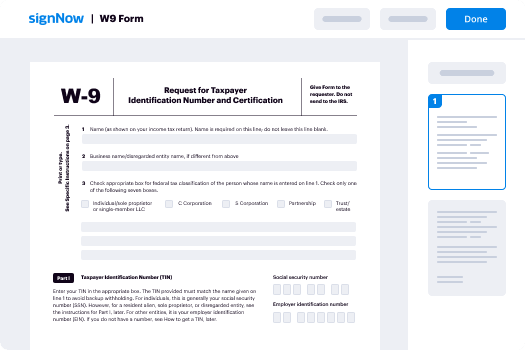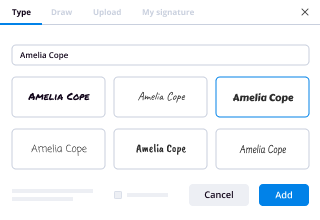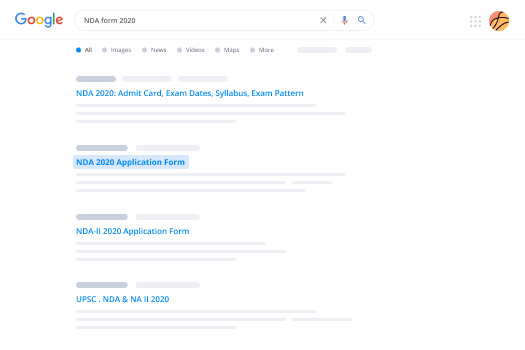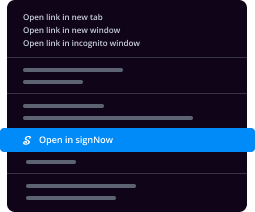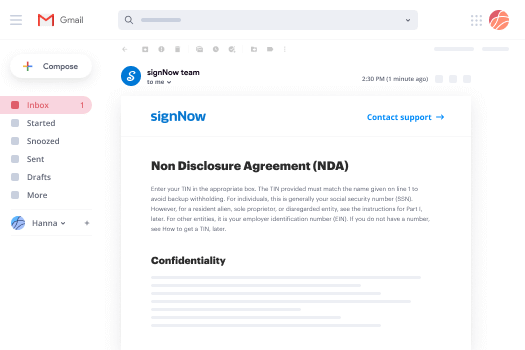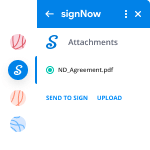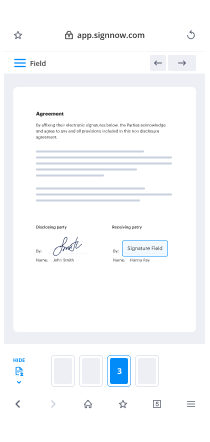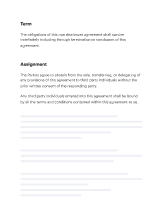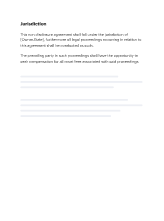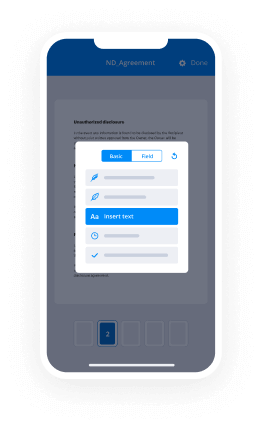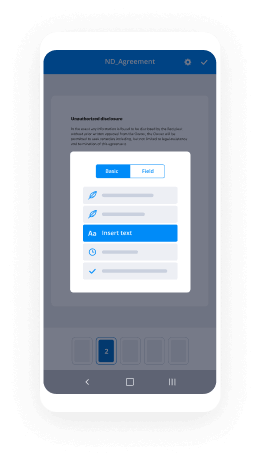RCW 26.26.335, .340
Mandatory Form (07/2017)
FL Parentage 347 Findings on Petition to Challenge
Paternity Acknowledgment or Denial p. 1 of 10
Superior Court of Washington, County of
In re parentage:
Petitioner (person who started this case) :
And Respondent/s:
(other people who signed the
Acknowledgment or Denial; other alleged
parents (if any))
Child over age 2:
No.
Findings and Conclusions on Petition to
Challenge Paternity Acknowledgment
or Denial
(FNFCL)
Findings and Conclusions on Petition to Challenge
Paternity Acknowledgment or Denial
1. Basis for findings and conclusions (check all that apply):
Parties’ agreement
Default order (date):
Order after Sexual Assault Fact-Finding Hearing on (date):
Trial for this case on (date): , with the following people present
(check all that apply):
Birth Mother (name): This person’s lawyer
Legal Guardian (name): This person’s lawyer
Acknowledged Father (name): This person’s lawyer
Presumed Parent (name): This person’s lawyer
Alleged Parent (name): This person’s lawyer
Guardian ad Litem for the child (name):
RCW 26.26.335, .340
Mandatory Form (07/2017)
FL Parentage 347 Findings on Petition to Challenge
Paternity Acknowledgment or Denial p. 2 of 10
Other (name and relationship to this case):
Other (name and relationship to this case):
The Court makes the following findings of fact and conclusions of law:
2. Notice and Personal Jurisdiction
All people with a right to receive notice of this case were served with the Summons and
Petition. except (name/s): .
The court can decide this case for the Birth Mother, Acknowledged Father and
Presumed Parent (if any) because they each agreed to personal jurisdiction in
Washington by signing a Paternity Acknowledgment or Denial of Paternity that was filed
with the State Registrar of Vital Statistics.
Alleged Parent (if any) – (Respondent’s name):
is an Alleged Parent. S/he did not sign a Paternity Acknowledgment or Denial.
The court has person jurisdiction (authority to make decisions) over this person
because s/he (check all that apply):
was personally served in this state.
lives in this state now.
lived in this state with the child.
lived in this state and paid for pregnancy costs or support for the child.
did or said something that caused the child to live in this state.
had sex in this state, which may have produced the child.
signed an agreement to join this Petition or other document agreeing that the
court can decide his or her rights in this case.
other (specify):
The court does not have personal jurisdiction (authority to make decisions) over
this person.
Other (specify):
Conclusion: The court has personal jurisdiction over all parties to this case.
except (name/s):
3. Child
This case is about a Paternity Acknowledgment (and Denial , if any) for the following child:
Child’s name Birth date (month / day /
year)
The Acknowledgment (and Denial , if any) was filed with the Washington State Registrar of
Vital Statistics on (date): .
4. Effective Date
RCW 26.26.335, .340
Mandatory Form (07/2017)
FL Parentage 347 Findings on Petition to Challenge
Paternity Acknowledgment or Denial p. 3 of 10
The court concludes that the Paternity Acknowledgment (and Denial, if any) became
effective on (date): . This is either the date the child was born,
or the date the Paternity Acknowledgment (and Denial , if any) was filed with the Washington
State Registrar of Vital Statistics, whichever happened late r.
5. Challenge Deadline
This case was started on (date): . This is the date the
Petition was either filed or served, whichever happened first.
This case was started (check one):
before the deadline for challenging the Paternity Acknowledgment (and Denial, if any)
because the Petition was filed or served (check one):
more than 60 days after the Effective Date listed above;
after any person who signed the Acknowledgment or Denial turned 19, if s/he was
under 18 when s/he signed; and
less than four years after the Effective Date listed above.
Conclusion: The court should decide this case.
after the deadline for challenging the Paternity Acknowledgment (and Denial , if any)
because the Petition was filed or served more than four years after the Effective Date
listed above.
Conclusion: The court should deny the Petition. (Skip to section
17 .)
too soon . This case was started before the time for filing a Petition to Withdraw
(Rescind) the Acknowledgment or Denial had ended. The Petition was filed or served
(check all that apply):
less than 60 days after the Effective Date listed above.
before (name): turned 19.
This person was under 18 when s/he signed the Acknowledgment or Denial .
Conclusion: The court should (check one):
deny the Petition. (Skip to section 17 .)
other (specify):
6. Reason/s for Challenge
The Petitioner claimed the Paternity Acknowledgement or Denial was signed because of
fraud, duress (pressure or force), or material mistake of fact.
Conclusion: The Acknowledgment and Denial , if any, should be declared
(check one):
Invalid . The Petitioner proved that the (check all that apply):
Paternity Acknowledgment
Denial of Paternity
was signed because of: (check all that apply):
fraud.
duress (pressure or force).
RCW 26.26.335, .340
Mandatory Form (07/2017)
FL Parentage 347 Findings on Petition to Challenge
Paternity Acknowledgment or Denial p. 4 of 10
material mistake of fact.
Valid . The Petitioner did not prove that the Paternity Acknowledgment
or Denial of Paternity was signed because of fraud, duress (pressure or
force), or material mistake of fact.
The court makes this conclusion based on the following facts (check all that apply):
the genetic test results described below.
other evidence (describe):
7. Allegation of Parentage Resulting From Sexual Assault
There was no allegation of sexual assault resulting in the birth of a child.
There was an allegation of sexual assault resulting in the birth of a child.
See the Order after Sexual Assault Fact-Finding Hearing signed by the court on
(date): ____________________ . The Findings and Conclusions from that order are
made a part of this order. The court has determined that the sexual assault allegation
was:
proved .
not proved .
8. Guardian ad Litem
Does not apply.
The Court appointed (name): Guardian ad
Litem (GAL) for the child.
The court has considered the report and recommendations of the G AL.
Other (specify) :
9. Genetic Testing Admitted
Does not apply. Either genetic testing was not done, or the results were not admitted.
(Skip to
10 .)
Genetic paternity testing was done and the results were admitted as evidence. The
testing was done by (check one): court order agreement of the Birth Mother,
Acknowledged Father and Presumed Parent (if any).
Who was tested? (check all that apply) :
Acknowledged Father – The person who signed the Paternity Acknowledgment,
(name): . The test results (Check one):
show a 99% or greater probability that the Acknowledged Father is the child’s
biological parent.
exclude the Acknowledged Father as a biological parent.
Presumed Parent – The person who signed the Denial of Paternity,
(name): . The test results (Check one):
show a 99% or greater probability that the Presumed Parent is the child’s
biological parent.
RCW 26.26.335, .340
Mandatory Form (07/2017)
FL Parentage 347 Findings on Petition to Challenge
Paternity Acknowledgment or Denial p. 5 of 10
exclude the Presumed Parent as a biological parent.
Alleged Parent – A possible father who did not sign a Paternity Acknowledgment
or Denial, (name): . The test results (Check one):
show a 99% or greater probability that the Alleged Parent is the child’s
biological parent.
exclude the Alleged Parent as a biological parent.
Test Results Challenged – The test results for (name):
were challenged by (name): . The court concludes that the
challenged test results (check one): are are not valid because (specify):
Other (specify):
Conclusion: (Check one):
The court should decide parentage according to the genetic t est
results described above.
The court should not decide parentage according to the genetic
test results described above because the court found the test
results are invalid.
The court should not decide parentage according to the genetic
test results described above based on the Order after Sexual
Assault Fact-Finding hearing .
10. Genetic Testing Not Admitted
Does not apply. Genetic testing results were admitted. (Skip to 11 .)
Genetic testing was not done, or the results were not admitted.
Conclusion: (Check all that apply):
Not admitted – The genetic testing results were not admitted because the
testing was done without either a court order or agreement of the necessary
parties (everyone who signed the Acknowledgment and Denial if any).
Not ordered – The court concludes that ordering genetic testing is not in the
child’s best interest after considering the report and recommendation of the
child’s Guardian ad Litem. The court should decide that the Acknowledged
Parent is the legal parent of the child, and the Presumed Parent (if any) is not
the legal parent of this child.
This conclusion is based on the following (check all that apply):
See Order on Motion for Genetic Testing .
(Describe clear and convincing evidence why testing is not in the child’s
best interest):
RCW 26.26.335, .340
Mandatory Form (07/2017)
FL Parentage 347 Findings on Petition to Challenge
Paternity Acknowledgment or Denial p. 6 of 10
No cooperation – (Name): did not cooperate with
an order for genetic testing. This conclusion is based on the following facts
(describe the failure to cooperate):
Because this person did not cooperate with genetic testing, the court
concludes that he (check one): should should not be the legal
father of the child. RCW 26.26.575(2). This is in the child’s best interest
because (explain):
Other (specify):
11. Child’s Name
The child’s name should not be changed.
The child’s name should be changed as listed in the Final Order on Petition to
Challenge Paternity Acknowledgment or Denial .
12. Jurisdiction over the Child (RCW 26.27.201 – .221, .231, .261, .271)
Does not apply. No one requested a Parenting Plan or Residential Schedule for the
child or asked the court to decide who the child should live with most of the time.
The court cannot approve a Parenting Plan or Residential Schedule for this child or
decide who this child should live with most of the time because the court does not
have jurisdiction over this child.
The court can approve a Parenting Plan or Residential Schedule for this child and
decide who this child should live with most of the time because (check all that apply):
Exclusive, continuing jurisdiction – A Washington court has already made a
custody order or parenting plan for the child, and the court still has authority to
make other orders for the child.
Home state jurisdiction – Washington is the child’s home state because
(check all that apply):
The child lived in Washington with a parent or someone acting as a parent for
at least the 6 months just before this case was filed, or if the child was less
than 6 months old when the case was filed, s/he had lived in Washington with a
parent or someone acting as a parent since birth.
There were times the child was not in Washington in the 6 months just
before this case was filed (or since birth if s/he was less than 6 months old),
but those were temporary absences.
The child does not live in Washington right now, but Washington was the
child’s home state some time in the 6 months just before this case was filed,
and a p arent or someone acting as a parent of the child still lives i n Washington.
The child does not have another home state.
RCW 26.26.335, .340
Mandatory Form (07/2017)
FL Parentage 347 Findings on Petition to Challenge
Paternity Acknowledgment or Denial p. 7 of 10
No home state or home state declined – No court of any other state (or tribe)
has the jurisdiction to make decisions for the child, or a court in the child’s home
state (or tribe) decided it is better to have this case in Washington and:
The child and a parent or someone acting as a parent have ties to Washington
beyond just living here; and
There is a lot of information (substantial evidence) about th e child’s care,
protection, education and relationships in this state.
Other state declined – The courts in other states (or tribes) that might be t he child’s
home state have refused to take this case because it is better to have this case in
Washington .
Temporary emergency jurisdiction – Washington had temporary emergency
jurisdiction over the child when the case was filed, and now has jurisdiction to
make a final custody decision because:
When the case was filed, the child was abandoned in this state, or the child
was in this state and the child (or child’s parent, brother or sister) was
abused or threatened with abuse;
The court signed a temporary order on (date) saying
that Washington’s jurisdiction will become final if no case is filed in the child’s
home state (or tribe) by the time the child has been in Washington for 6
months;
The child has now lived in Washington for 6 months; and
No case concerning the child has been started in the child’s home state (or
tribe).
Other reason (specify):
13. Parenting Plan or Residential Schedule
Does not apply.
The court has jurisdiction over the child as listed in section 12 above.
(Check one):
The court signed the final Parenting Plan or Residential Schedule filed
separately today or on (date): .
No one requested a Parenting Plan or Residential Schedule . The child has
been living with (name): most of the time.
The child should continue to live with this parent most of the time. This parent
should be named the child’s custodian.
No Parenting Plan or Residential Schedule should be entered based on the
Order after Sexual Assault Fact-Finding Hearing .
The plan, schedule or custodian is approved (check one):
by default. The court considered the court record.
by agreement of both parents without a contested hearing. The court
considered the parties’ agreement and the following evidence, if any:
.
RCW 26.26.335, .340
Mandatory Form (07/2017)
FL Parentage 347 Findings on Petition to Challenge
Paternity Acknowledgment or Denial p. 8 of 10
after a summary judgment hearing. The court considered the evidence listed in
the Summary Judgment Order .
after trial. The court considered all of the evidence admitted at trial.
The court does not have jurisdiction over the child as listed in section 12 above.
Therefore, the court cannot approve a Parenting Plan or Residential Schedule, or
decide who the child should live with most of the time.
Other (specify):
14. Child Support
Does not apply.
(Name): is not a legal parent of the child.
Conclusion: His/her obligation to support the child should end on the date listed in
the Order on Petition to Challenge Paternity Acknowledgment or
Denial .
No child support should be established or collected based on the Order after Sexual
Assault Fact-Finding Hearing .
The court signed the final Child Support Order and Worksheets filed separately today
or on (date): .
There is no need for the court to order child support because the DSHS Division of
Child Support (DCS) has already established an administrative child support order for
the child in DCS case number: .
Other (specify):
15. Protection Order
No one requested an Order for Protection in this case.
(Name): requested an Order for Protection in this case.
Conclusion: The court should (check one):
not approve a protection order because:
approve a protection order because:
16. Restraining Order
No one requested a Restraining Order in this case.
(Name): requested a Restraining Order .
Conclusion:The court should:
RCW 26.26.335, .340
Mandatory Form (07/2017)
FL Parentage 347 Findings on Petition to Challenge
Paternity Acknowledgment or Denial p. 9 of 10
not approve a Restraining Order because:
approve a Restraining Order because:
17. Fees and Costs
Each party should pay his or her own fees and costs.
Lawyer’s fees were awarded in the Order after Sexual Assault Fact-Finding Hearing
and should be included in the Final Order.
(Name): incurred fees and costs, and needs help to
pay those fees and costs. (Name): has the
ability to help pay fees and costs and should be ordered to pay the amount as listed in
the Final Order . The court finds that the amount ordered is reasonable.
Fees for a Guardian ad Litem (GAL) or other court-appointed professional should be
paid as listed in the Final Order. The court has considered relevant factors including
each party’s ability to pay, and finds the fees as ordered are reasonable.
Other findings:
18. Other findings or conclusions (if any)
Date Judge or Commissioner
Petitioner and Respondent or their lawyers fill out below.
This document (check any that apply) : This document (check any that apply):
is an agreement of the parties is an agreement of the parties
is presented by me is presented by me
may be signed by the court without notice to me may be signed by the court without notice to me
Petitioner signs here or lawyer signs here + WSBA # Respondent signs here or lawyer signs here + WSBA #
Print Name Date Print Name Date
RCW 26.26.335, .340
Mandatory Form (07/2017)
FL Parentage 347 Findings on Petition to Challenge
Paternity Acknowledgment or Denial p. 10 of 10
This document (check any that apply) : This document (check any that apply):
is an agreement of the parties is an agreement of the parties
is presented by me is presented by me
may be signed by the court without notice to me may be signed by the court without notice to me
Other Respondent or lawyer signs here + WSBA # Other party or Guardian ad Litem signs here + WSBA #
Print Name Date Print Name Date
If any parent or child received public assistance:
The state Department of Social and Health Services (DSHS) was notified about this order
through the Prosecuting Attorney’s office , and has reviewed and approved the following:
Child support Medical support
Past due child support Other (specify):
Deputy Prosecutor signs here Print name and WSBA # Date
Essential tips for preparing your ‘Final Order On Petition To Challenge Paternity Acknowledgment ’ online
Are you fed up with the burden of managing documents? Look no further than airSlate SignNow, the premier eSignature solution for individuals and businesses. Bid farewell to the monotonous routine of printing and scanning papers. With airSlate SignNow, you can effortlessly complete and sign documents online. Take advantage of the robust features encompassed in this user-friendly and affordable platform and transform your method of document management. Whether you need to sign forms or gather signatures, airSlate SignNow simplifies everything with only a few clicks.
Follow this detailed guide:
- Access your account or commence a free trial with our service.
- Click +Create to upload a file from your device, the cloud, or our template collection.
- Edit your ‘Final Order On Petition To Challenge Paternity Acknowledgment ’ in the editor.
- Select Me (Fill Out Now) to complete the form on your end.
- Add and designate fillable fields for others (if necessary).
- Proceed with the Send Invite setup to solicit eSignatures from others.
- Save, print your version, or convert it into a reusable template.
No need to worry if you want to collaborate with your colleagues on your Final Order On Petition To Challenge Paternity Acknowledgment or send it for notarization—our platform provides all you need to achieve these tasks. Sign up with airSlate SignNow today and elevate your document management to new levels!


